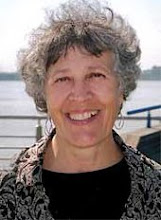Following up on my last post about the urging readers to consider the writer-the what/why/how she/he does in a piece of writing--check out Diana B. Henriques' front page article in today's The New York Times ("Madoff Scheme Kept Rippling Outward, Crossing Borders," 12/20/08). It's a skillfully crafted piece of narrative nonfiction--great example of my 3Cs of writings--Clear, Coherent, Compelling. As you read it, think about/identify--the rhetoric devices/strategies she uses, e.g. her use of repetition in the third paragraph after the subheading "The Scheme Collapses" near the end of the piece.
Another example is Eve Merriam's Independent Voices, a collection of narrative nonfiction poems about Benjamin Franklin, Elizabeth Blackwell, Frederick Douglass, Henry Thoreau, Lucretia Mott, Ida B. Wells, Fiorello H. LaGuardia. In "A Note to the Reader," Merriam writes: "The portraits are in verse, yet no instance has any 'poetic license' been taken. Every incident and description, to the best of my knowledge, is based upon true happenings and not hearsay. But if that is so, if the sketches are in no way fictionalized, then why not have represented them in factual prose? Because I felt that through the condensation and heightened speech of verse, history might come more alive and these actual independent voices might resound once again--lively, familiar, ringing clear." Readers who read her note (although many won't, I have sadly discovered from my teaching), will be in a position to have a dialogue with her about her feeling that "history might come more alive" through "the condensation and heightened speech of verse."
Saturday, December 20, 2008
Subscribe to:
Post Comments (Atom)

No comments:
Post a Comment